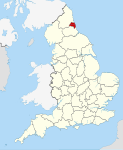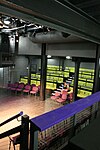Fenwick (department store)
Buildings and structures in Newcastle upon TyneCompanies based in Newcastle upon TyneDepartment store buildings in the United KingdomDepartment stores of the United KingdomUse British English from August 2015
Fenwick () is an independent chain of department stores in the United Kingdom. It was founded in 1882 by John James Fenwick in Newcastle upon Tyne, and today consists of nine branches. It was a member of the International Association of Department Stores from 1988 to 2010. As of 2019, the chain is still owned by members of the Fenwick family. The company was chaired by Mark Fenwick until 2017. In 2012, the company was reported to be valued at £452million.
Excerpt from the Wikipedia article Fenwick (department store) (License: CC BY-SA 3.0, Authors).Fenwick (department store)
Northumberland Street, Newcastle upon Tyne Haymarket
Geographical coordinates (GPS) Address Phone number Website Nearby Places Show on map
Geographical coordinates (GPS)
| Latitude | Longitude |
|---|---|
| N 54.97495 ° | E -1.61283 ° |
Address
Fenwick
Northumberland Street
NE1 7AS Newcastle upon Tyne, Haymarket
England, United Kingdom
Open on Google Maps









